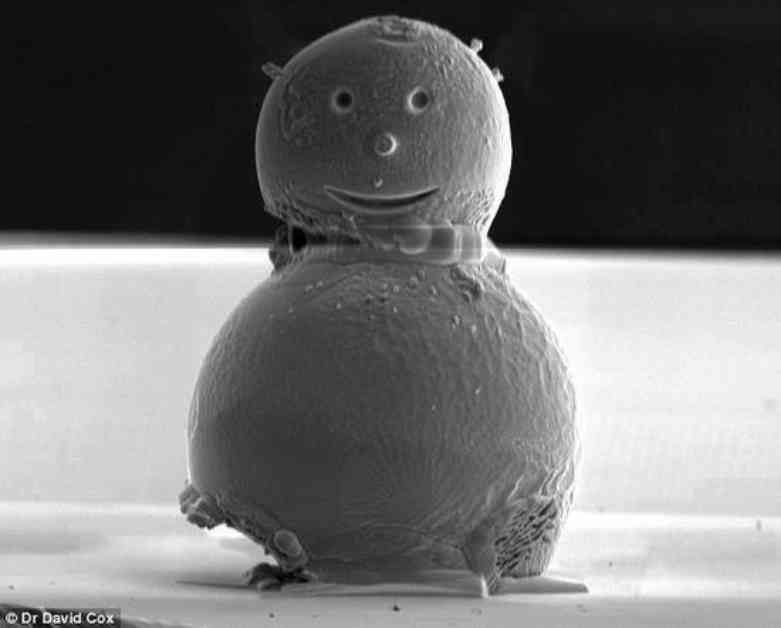The world’s smallest snowman, measuring just 10 µm across, was created in 2009 by Dr. David Cox at the National Physical Laboratory (NPL) in the UK. This tiny snowman is only 1/5th the width of a human hair, showcasing the incredible capabilities of nanofabrication techniques available to researchers.
The snowman’s body is made up of two tin beads, typically used to calibrate electron microscope lenses. Dr. Cox carefully welded these beads together using a small amount of platinum, a durable and corrosion-resistant precious metal that provided a strong bond for the snowman’s structure. To add the intricate details like the eyes and smile, a focused ion beam (FIB) was used. This technique involves sculpting materials with nanometer precision by directing a stream of ions at them. The FIB carved out the snowman’s facial features with incredible accuracy, and a tiny platinum blob less than one micrometer wide was deposited to form the nose.
Although the snowman itself is a cute example of scientific creativity, the techniques utilized to create it have significant implications. Nanofabrication methods like those demonstrated by Dr. Cox are valuable in various fields such as electronics and medicine. In electronics, manipulating materials at the nanoscale has led to the production of smaller, more efficient components. Nanofabrication techniques have improved the performance of transistors, leading to faster and more powerful processors. In the medical field, nanotechnology is revolutionizing treatments and diagnostics. Engineered nanoparticles can deliver drugs directly to cancer cells, reducing damage to healthy tissue. Furthermore, nanofabrication is used to create sensitive diagnostic devices capable of detecting diseases in their early stages. Although the tiny snowman may seem insignificant, it symbolizes the remarkable achievements possible today.
The ability to manipulate matter at such a small scale is expected to result in groundbreaking discoveries that we can only begin to imagine. Nanofabrication techniques hold the key to future advancements in various industries, promising innovations that could transform our world in ways we have yet to discover. The world’s smallest snowman may be small in size, but its creation represents the vast potential of nanotechnology and the exciting possibilities it offers for the future.






